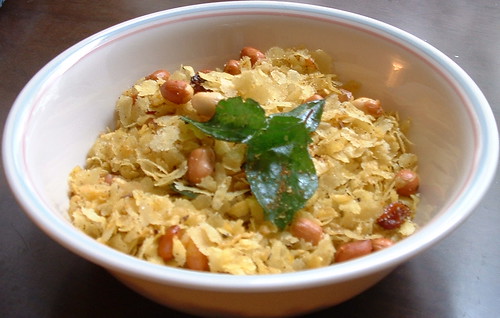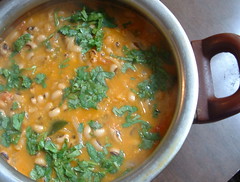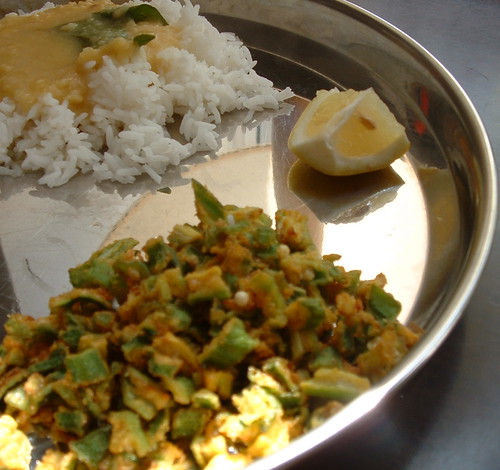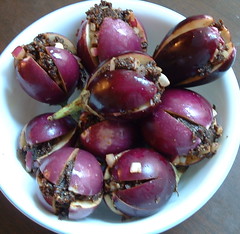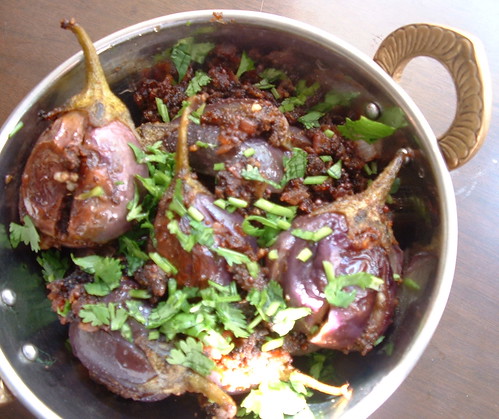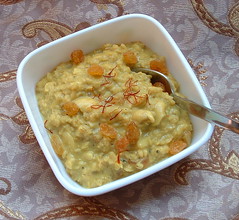This article is first of a special series called "The A-Z of Marathi food". India is the land of diversity. Each of the 28 states in India has a unique cuisine but the Indian food served in restaurants represents only a tiny fraction of our culinary heritage. I come from the western Indian state of Maharashtra. Capital: Bombay (Mumbai.) Population: 96 million (only 11 countries in the world have a population higher than Maharashtra.) Language: Marathi. Traditional Marathi food is earthy and humble, diverse and very tasty. It also remains relatively unknown to those outside the state. It's time to change that. I invite you to join me on an alphabetical culinary tour of my home state. We will go through the letters A to Z and make a dish with each letter to showcase the cuisine that I grew up on.
C is for Chivda and Chavli Amti
We continue our journey with the letter C...another letter that has great recipes associated with it. The most important C in Marathi food in my opinion is the Chapati...a humble flatbread made with whole wheat flour. Clare over at Eat Stuff impressed me very much with her delicious-looking chapatis recently. She made them using her roti-maker. Rolling out chapatis manually is a skill that needs practice, something I am still working on!
C also stands for chutney. Deccanheffalump over at the Cooks Cottage recently wrote a beautiful and informative post about the various chutneys that are invariably part of the Marathi meal. Deccanheffalump has to be credited with putting Marathi food on the international foodie map with her consistently beautiful blog set in the city of Pune, Maharashtra. She called chutneys the "pesto of the East", how apt!
Another of my favorite "C"s is the tropical fruit Chikoo. A small brown nondescript fruit, it opens up to reveal a sweet creamy interior reminiscent of butterscotch. I have made chikoo ice cream before. Indian stores often sell frozen chikoo, perfect for making smoothies.
C stands for a bunch of crispy crunchy snacks: Chakli, Chirote, Chivda, as so many of you pointed out. We often forget that packaged snacks are a relatively recent invention, and that in years past, cooks made a stash of snacks to be eaten over several days. In Indian homes, small dishes of snacks are often enjoyed at tea-time. One hallmark of Indian families is their hospitality, a trait that is common to homes across the nation, no matter what their economic status. As soon as you enter an Indian home, you will be seated and offered something to eat and drink. These home-made snacks often come in handy when unexpected guests drop in.
All of these snacks are traditionally made at Diwali, the festival of lights, although I love them any old day of the year. Chakli is made with a spicy batter formed into swirls using a mold and deep-fried. I don't own a Chakli mold so thats out of the question. Chirote are an absolutely amazing sweet snack. Home-made puff pastry is rolled delicately into little nest-shapes, fried and sprinkled with fine sugar. Waaay out of my league! The third snack, Chivda luckily is very easy to make. The base is poha, or parboiled pounded rice. It is available in Indian stores in two forms, a thick variety that is soaked in water and used to make a savoury dish, and the thin kind is made into the dry snacky chivda. It is wonderful to have a jar of Chivda sitting around...a handful is enough to spare you hunger pangs in the evening while you are getting dinner ready. A warning: this stuff is addictive! It's almost like Trail Mix...a potpourri of flavors with a satisfying crunch, and the nuts and whole grain make it a pretty healthy snacking option.
Chivda
2 cups thin poha
2 tbsp oil
1 tsp mustard seeds
1 tsp cumin seeds
5-6 curry leaves
1/2 tsp turmeric
1/2 tsp red chilli powder
1/4 cup peanuts
1/4 cup raisins
1 tsp salt
2 tsp sugar
Method:
1. Heat oil in a kadai/wok/pan. Pop the mustard seeds, add cumin seeds, curry leaves, peanuts and raisins. Fry till the peanuts and raisins are golden.
2. Add salt, sugar, turmeric and chilli powder and stir for a few seconds.
3. Add the poha and stir fry on medium-low heat for 5-10 minutes till poha is coated with all spices and lightly toasted.
4. Cool completely and store in an airtight container.
For a delicious variation, add 2-3 garlic cloves to the stir fried spices. For another variation, use fresh green chillies instead of red chilli powder. This chivda is addictive and delicious by itself, but you can add come minced onion, minced cilantro and lemon juice to it to make instant "bhel" for an afternoon snack.
Another "C" is the often-underused Chavli or the black-eyed pea. What's not to love...this bean is pretty , tasty, nutritious! In Marathi homes, it is used to make a tasty curry which is served as a main dish with rice. Today I will share a recipe that I got from an authentic Marathi cookbook. It demonstrates the concept of "Vaatan" or grinding, in which spices are fried together and ground along with the curry bases of onion and coconut, to make a fragrant paste that gives the curry its heady aroma. The "vaatan" method is a bit more time-consuming that plain stir-frying but so worth it for a great weekend meal!
Chavli Curry
(adapted from the Marathi cookbook "Lajawab Curries" by Sudha Maydev)
Serves 4
1 cup Whole Black-eyed Peas (Chavli), soaked overnight and boiled till tender
1/2 cup onion, sliced
1/2 cup tomato puree/1 tomato, chopped fine
1 tsp curry powder of your choice (garam masala/sambar masala etc)
1 tsp sugar
salt to taste
For tadka
1 tbsp oil
1/2 tsp mustard seeds
4-5 curry leaves
1/8 tsp asafoetida
1/2 tsp turmeric
For masala paste
1 tbsp oil
1 tsp chana dal
1 tsp urad dal
1 tsp coriander seeds
1/2 tsp fenugreek seeds
3-4 red chillies
1 tsp cumin seeds
1 onion, chopped
3 tbsp grated unsweetened coconut
Method:
1. Make masala paste by frying all the ingredients in the oil till lightly toasted and then grind fine.
2. Make the tadka by heating oil, then adding the rest of the ingredients and frying for a minute or two. Add the sliced onion and fry till well browned.
3. Add tomato, salt, sugar, curry powder and masala paste and fry well.
4. Add the boiled chavli, bring to a boil, simmer for 5 minutes, then serve hot garnished with cilantro.
That does it for C. Next week we journey on to the letter "D". Any suggestions for this one?

